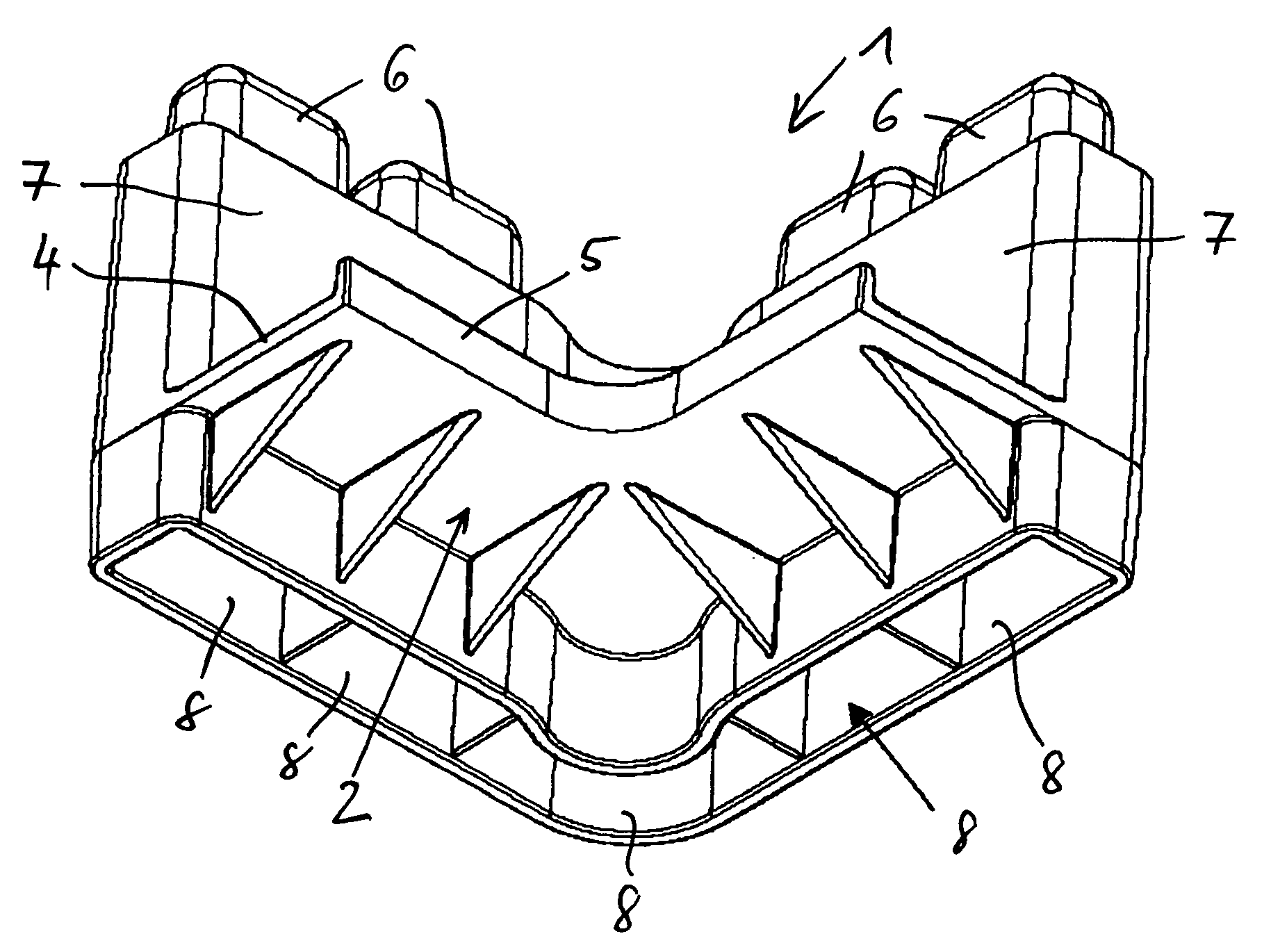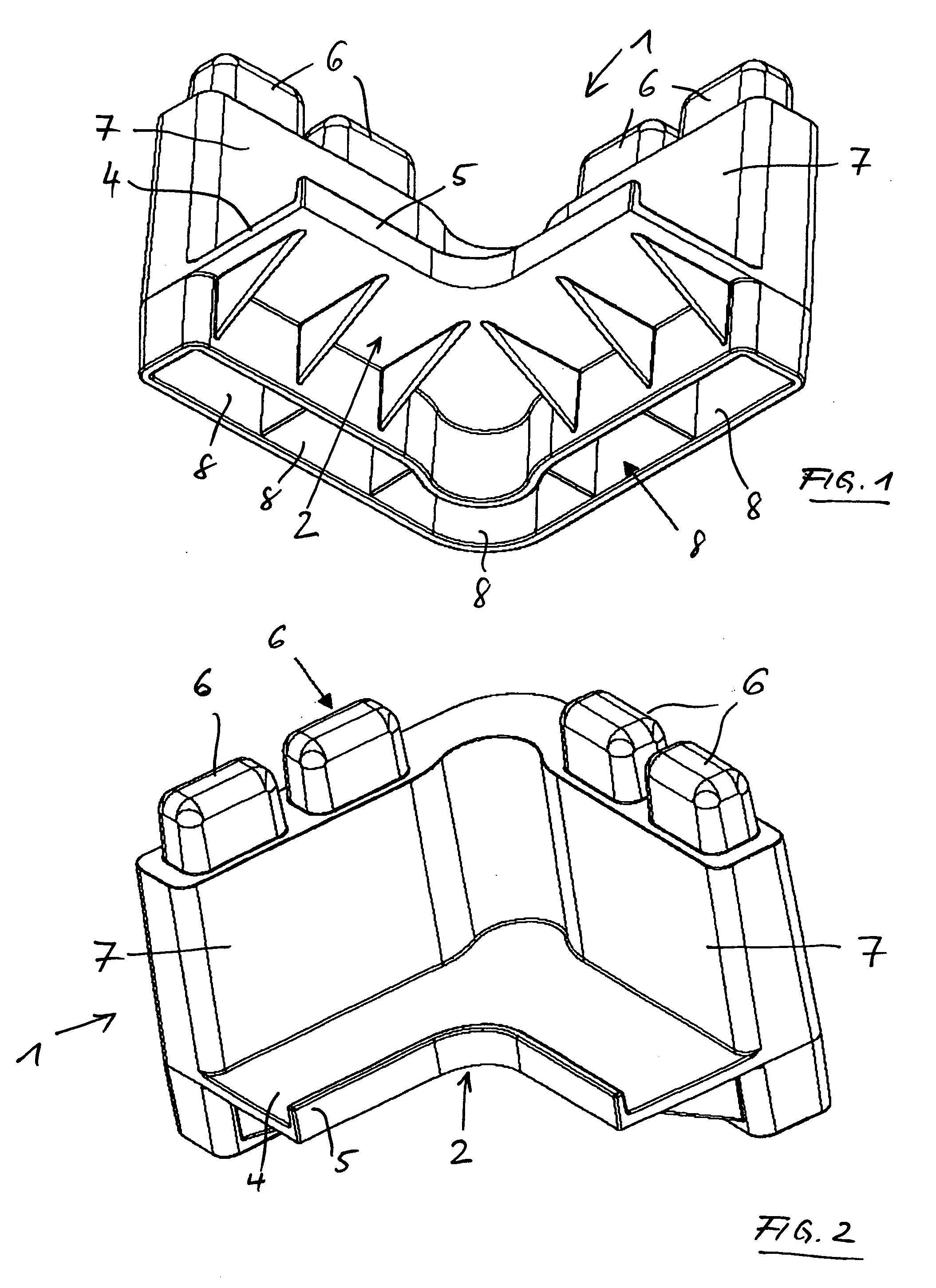Modular plug-in apparatus and method for safe and secure storage of horizontally stacked photovoltaic modules during transport
a technology of photovoltaic modules and plug-ins, applied in photovoltaics, heat collector mounting/support, internal frames, etc., can solve the problems of not being able to stack two loaded pallets on top each other, affecting the work efficiency of end users, and reducing the risk of damage. , the effect of cost-effective production
- Summary
- Abstract
- Description
- Claims
- Application Information
AI Technical Summary
Benefits of technology
Problems solved by technology
Method used
Image
Examples
examples
[0049] For the application of the invented modular plug-in system and its advantages:
example # 1
Example #1
Problem:
[0050] One hundred and fifty framed standard PV modules with a surface of 1 m2 each are suppose to be packaged and shipped safely from the module manufacturer to the customer.
A: Problem Solution Using Traditional Packaging Methods
Steps:
[0051] Each of the 150 PV modules is individually packaged using cardboard and adhesive tape. A maximum of 15 individually packaged modules are stacked flush on a wooden pallet (no standard pallet, but rather a customary special pallet, which is fit to the surface measurements of the product). The loaded pallet is secured with tightening straps. The height of each of the ten stacks on pallets is approximately 90 cm.
Result:
[0052] The time for each of the three steps, with regard to 150 PV modules, totals five man hours. The amount of packaging material used (without adhesive tape and without tightening strap) amounts to ten pallets and approximately 330 m2 of cardboard.
B: Problem Solution Utilizing the Invented Modular Plu...
example # 2
Example #2
Problem:
[0056] Unframed standard PV modules shall be packaged safely for shipment to transport the module from the manufacturer to the customer.
Steps:
[0057] The traditional packaging method essentially is equivalent to Version A of Example #1.
Result:
[0058] When applying the modular plug-in system according to the invention, the problem is solved by using molded form components whose support profile is formed out in the shape of two parallel running, cross corner horizontal bars (cf. FIG. 7). In this case, at first, three such molded form components are pushed over the four edges of the unframed PV module and then are placed together with the PV module onto the pallet or are subsequently plugged into the upwardly growing four column stack. The advantages in regard to time and packaging material savings are essentially equivalent to Example #1.
PUM
 Login to View More
Login to View More Abstract
Description
Claims
Application Information
 Login to View More
Login to View More - R&D
- Intellectual Property
- Life Sciences
- Materials
- Tech Scout
- Unparalleled Data Quality
- Higher Quality Content
- 60% Fewer Hallucinations
Browse by: Latest US Patents, China's latest patents, Technical Efficacy Thesaurus, Application Domain, Technology Topic, Popular Technical Reports.
© 2025 PatSnap. All rights reserved.Legal|Privacy policy|Modern Slavery Act Transparency Statement|Sitemap|About US| Contact US: help@patsnap.com



